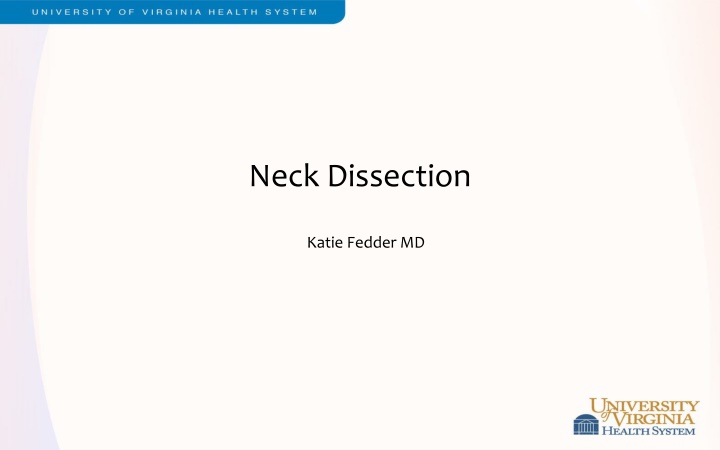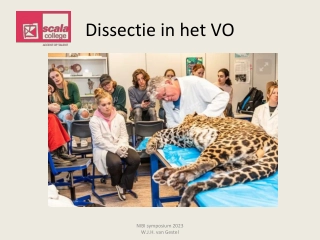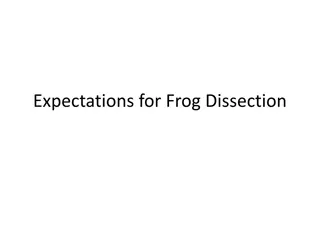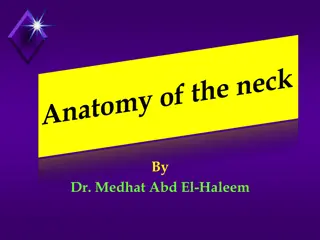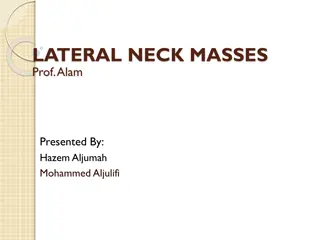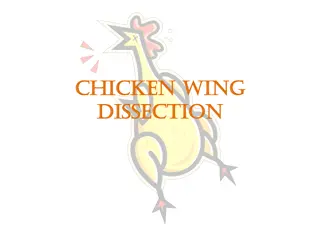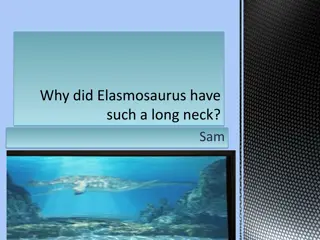Overview of Neck Dissection in Head and Neck Cancer
Neck dissection is a crucial procedure for the prognostic and therapeutic management of head and neck cancers, particularly in cases where cancer has spread to the cervical lymph nodes. This process involves removing all lymph nodes and surrounding structures in the neck region to prevent the spread of cancer and improve treatment outcomes. Understanding the fascial planes and clinical relevance of neck anatomy is essential for successful surgery.
Download Presentation

Please find below an Image/Link to download the presentation.
The content on the website is provided AS IS for your information and personal use only. It may not be sold, licensed, or shared on other websites without obtaining consent from the author.If you encounter any issues during the download, it is possible that the publisher has removed the file from their server.
You are allowed to download the files provided on this website for personal or commercial use, subject to the condition that they are used lawfully. All files are the property of their respective owners.
The content on the website is provided AS IS for your information and personal use only. It may not be sold, licensed, or shared on other websites without obtaining consent from the author.
E N D
Presentation Transcript
Neck Dissection Katie Fedder MD
Why do we do it? Prognostic and therapeutic treatment of the cervical region in various types of head and neck cancer HN cancer grows at primary site and next stop is . Lymphatic channels lymph nodes! Spread of cancer to cervical node cuts cure rate by 50% !!!!!
How I describe it Remove all the lymph nodes from jaw bone to collar bone (can adjust depending on levels needed) Find all the important structures, get them out of the way, and remove everything else No discrete lymph node excision or plucking in complete oncologic surgery Removal of all fibrofatty contents of the neck = includes lymph nodes AND lymphatic channels
Fascial Planes of the Neck Superficial cervical fascia (platysma) Deep cervical fascia Superficial layer (SCM, straps, trap) Middle layers Carotid sheath (carotid, IJV, X) Visceral fascia (trachea, esoph, thyroid) Alar fascia (connects carotid sheaths) Deep layer (paravertebral)
Clinical Relevance Fascial layers can serve as a barrier to infection Retropharyngeal space Route of spread from oropharyngeal infection Danger space Space extends inferiorly to mediastinum; potential route for rapid development of mediastinitis
Anterior Cervical Triangle Boundaries: Superior: Mandible Anterior: Strap muscles Posterior: Anterior border of SCM Contents Submandibular triangle Nerves, fat, lymph nodes Carotid sheath
Posterior Cervical Triangle Boundaries: Anterior: Posterior border of SCM Posterior: Trapezius Inferior: Clavicle Contents CN XI Omohyoid
Classification of Neck Dissection TONS of terminology In general, have become more limited over the years (based on equivalent survival outcomes w less surgery) Timing terminology Elective Therapeutic Salvage
Other terminology Radical: I-V + SCM + IJV + CN XI Modified Radical: I-V with preservation of 1-3 of additional structures Selective: preservation of some lymphatic level(s) Extended: resection of major structure not listed here
P I II IB A III IV VB
Level 1 Submental triangle 1a Boundaries: ABD, hyoid, mylohoid Not much to mess up here! Submandibular triangle 1b ABD and PBD, mandible Probably most difficult anatomy- highest concentration of important stuff
Marginal mandibular nerve Deep to: platysma, superficial layer of deep cervical fascia Superficial to: facial vein
Hypoglossal Nerve Passes between ICA and ECA and makes a big turn Deep to mylohyoid Superficial to hyoglossus
Level II Includes upper nodes along deep jugular chain Boundaries: lateral border of strap muscles, PBD, SCM, hyoid [carotid bifurcation] Split into two compartments by CN XI IIa anterior to nerve IIb posterior to nerve
What will you encounter in the procedure? Platysma Absent in the MIDLINE and at MOST LATERAL ASPECT of neck dissection incision Fibers run OPPOSITE those of the SCM Everything DEEP to this muscle should be removed for the pertinent lymphatic levels of your neck dissection (Down to what fascial layer??)
Sternocleidomastoid Bulky, reliable landmark Extends from mastoid tip to clavicle/ manubrium Dissection along the medial border of this muscle while retracting it laterally is ESSENTIAL to exposure of lymphatic levels Try to avoid cutting into/ too close to the muscle itself- ideally leave fascial layer over fibers
Be Careful! External jugular vein Great auricular nerve Reliable landmarks seen during incision EJV more variable of the two but can easily be identified on skin surface and/or CT neck Always try to preserve GAN (exception = difficult parotidectomy) EJV often cut- but do it in a controlled way
Omohyoid Runs from hyoid, tethered to clavicle, attaches to scapula !!separates level III and IV IJV lies DIRECTLY beneath this
PBD Resident s friend Superficial to: ECA CN XII ICA IJV
